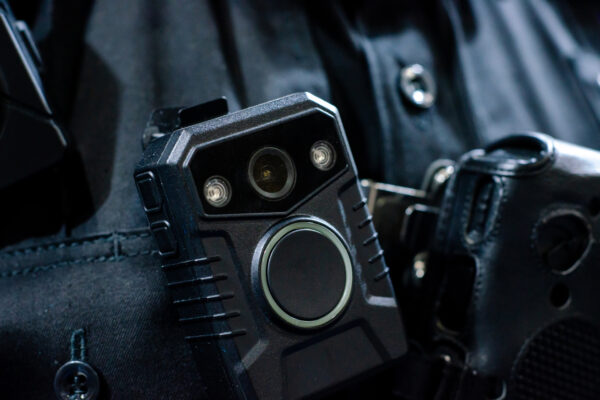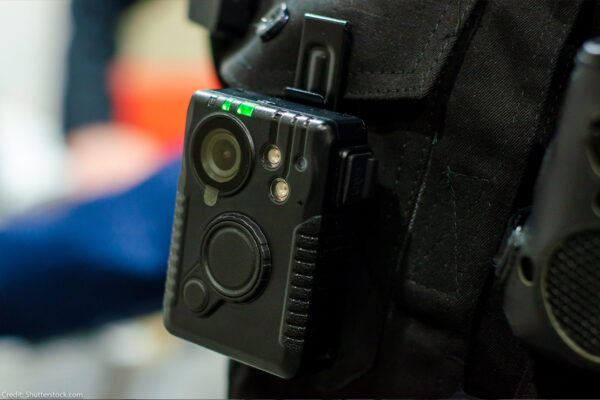Back in April, voters decided to tax themselves in order to equip the Anchorage Police Department (APD) with body cameras. Why? In the wake of George Floyd’s murder, the community recognized the importance for APD to be as transparent and accountable as possible. And body cameras provided a way for the public to understand how the city’s police officers did their jobs.
But 8 months into the project, we fear that body cameras won’t live up to their promise and will become another tool in the police department’s arsenal to collect information on residents, evade accountability, and obfuscate how APD polices the city.
First, we have to look at the department’s public input process. All along, Chief Ken McCoy has stressed the importance of building trust and being accountable and transparent with the public. We were glad that APD reached out to ACLU of Alaska to get feedback on its draft policy, and were happy to provide it. But we do not represent the entire community. On a whole, the way APD has collected input from the public makes it seem like the department did not want to put in the work to invite ordinary people into the process.
It’s hosted a single public listening session in the middle of summer, a week and a half after APD published a draft policy. Predictably, the session wasn’t well attended. And almost nobody showed up to the only other specific public comment opportunity, hosted by the Public Safety Advisory Commission on August 4.
These should have been signals that APD needed to do more, or adapt models that other police departments have used to truly connect with the community on similarly complex topics like aerial surveillance. Instead, the process has only gotten worse. The public hasn’t heard much about the policy over the last few months because the Municipal Attorney’s office said it needed to resolve privacy concerns. It’s unclear what that office’s role has been in shaping the new draft. It’s also unclear what other feedback APD has received from residents or groups, and how that feedback shaped the policy.
Then on October 6, Municipal Manager Amy Demboski — not McCoy or a deputy — introduced a significantly different policy at an Assembly committee meeting during the middle of the day, and indicated the public would have just 30 more days to provide input. Demboski may have the authority to speak for APD or the Municipal Attorney’s office. But up to this point, it’s been Chief McCoy’s show, and her actions make us question how tightly the Bronson Administration is controlling decision-making and information flow.
To give a concrete example, McCoy indicated in August that he wanted the policy to include a provision that ensures public release of videos where a person is killed. We took his intent as a good sign. But it was dismaying to see the new policy draft did not include any language to this effect, without any kind of detailed explanation. Instead, we got the policy presented by Demboski, a person who has not been directly involved in the policy’s development or the legal issues at play.
Sometimes people complain about process because they don’t agree with the political or policy decisions being made. But in this case, the process was an opportunity to demonstrate to the community that APD will use body cameras to be transparent with the public and hold themselves accountable. And APD’s missteps on the public input process have been compounded by the apparent intervention of the Bronson Administration.
If the current draft of the policy is finalized, the public will almost certainly never see footage for incidents like the killings of William Riley-Jennings, shot by APD in Russian Jack Park last December, or Daelyn Polu, killed by police in February 2020. These are incidents that foment distrust, and where transparency and accountability are needed most. It is extremely frustrating that after the community fought over many years to bring body cameras to Anchorage, in the hopes that they would be used to build trust and deliver accountability, that they are likely to be used to consolidate police power. The policy will allow officers to stop recording to have secret conversations, or when the recording may show events that are unfavorable to an officer. It will allow APD to continue to abuse public records law to keep information from the public. It won’t allow the community to assess how APD enacts its new “low-level” offense enforcement scheme. It doesn’t make clear how long they will retain videos, allowing APD to treat people like prospective criminals. It provides no clear way for a person to see video of themselves.
It’s striking that APD released its latest policy the week that hundreds of people streamed to the Loussac Library, late into the night, to talk about how a proposed mask mandate is an unconstitutional attack on personal liberty and freedom — about how the Assembly members who support the mandate are tyrants. Do Anchorage residents realize how much freedom we already give away to the police, how much power we freely grant them to have? The body camera program is shaping up to give away more of your freedom, using your taxpayer dollars. We shouldn’t tolerate it.



